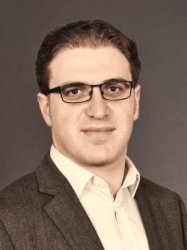BibTex format
@article{Shiri:2022:10.1007/s00259-022-06053-8,
author = {Shiri, I and Sadr, AV and Akhavan, A and Salimi, Y and Sanaat, A and Amini, M and Razeghi, B and Saberi, A and Arabi, H and Ferdowsi, S and Voloshynovskiy, S and Gunduz, D and Rahmim, A and Zaidi, H},
doi = {10.1007/s00259-022-06053-8},
journal = {European Journal of Nuclear Medicine and Molecular Imaging},
pages = {1034--1050},
title = {Decentralized collaborative multi-institutional PET attenuation and scatter correction using federated deep learning},
url = {http://dx.doi.org/10.1007/s00259-022-06053-8},
volume = {50},
year = {2022}
}

